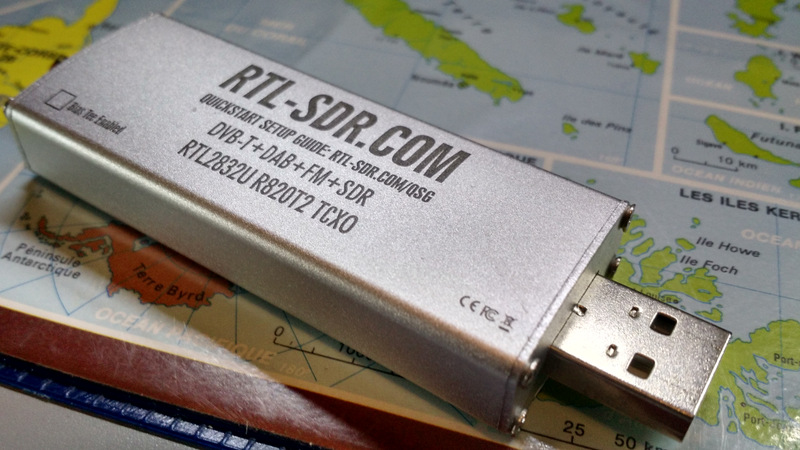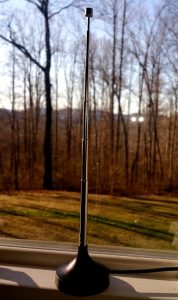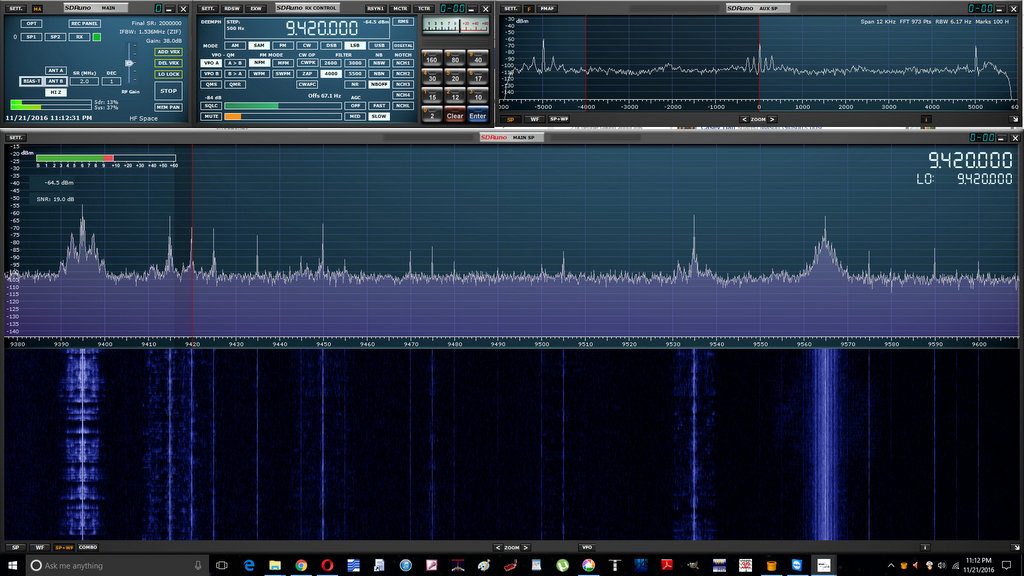Many thanks to SWLing Post contributor, Jarno de Haan, who shares this US Army Training Film about circuit testing via YouTube. If you own vintage radio gear, you should check this out:

Many thanks to SWLing Post contributor, Jarno de Haan, who shares this US Army Training Film about circuit testing via YouTube. If you own vintage radio gear, you should check this out:
Many thanks to SWLing Post contributor, Bruce F, who writes:
HI Thomas, I thought I would put this idea out to your site – in case it isn’t already there. It’s a brilliant solution to the apparent lack of a working Air Band scan function on the Tecsun PL-660. Note – I did not come up with this idea, but came across it in a Yahoo group.
It IS possible to scan the Air Band on the PL660, as long as you have picked out WHICH Air Band frequencies are in use in your area. There are websites which list these frequencies for each airport:
Here’s how to set up the PL-660:
- Pick an empty page in the Memory.
- Put in a shortwave frequency in the first empty space; the “00” slot.
- Then fill in the succeeding spaces on that page with the Air Band frequencies you’ve chosen.
- Now go back to the “00” slot and hold down the scan button.
Works on my set!
What a cool trick! I’ve lent my PL-660 to a friend, but as soon as I get it back, I’ll also try this trick by setting up a page dedicated to my local aviation frequencies!
Thanks, Bruce!
 It’s been nearly a year since I acquired both the RTL-SDR (above) and Rasperry Pi 3 (below)r.
It’s been nearly a year since I acquired both the RTL-SDR (above) and Rasperry Pi 3 (below)r.
Remember when I made a plea for Pi 3 projects just last year––?
Although many of you suggested some great projects, I never actually got around to doing any of them. Now, don’t get me wrong––I wanted to, of course, but simply got involved with reviews, NPOTA, two months of travel…and, well, life.
Then, last week at the Winter SWL Fest, a common theme emerged in both presentations and discussions: the numerous applications of the super-cheap, and thus super-ubiquitous, RTL-SDR dongle. In their engaging presentations, both Dan Srebnick and Mark Fahey––SWLing Post contributors and good friends––focused on the power of the RTL-SDR, expounding upon some simple, inexpensive applications in their forums. It was inspiring. Also, buddy Eddie Muro showed me just how easily an ADS-B receiver could be set up using an Android phone.
Back to the Pi. Though I was already aware the Pi 3 and RTL-SDR could be united to make an ADS-B receiver, watching Mark Fahey talk about how simply one could feed the FlightAware network with ADS-B data finally hooked me. Why not, indeed? Here was fun to be had!
I couldn’t get the idea out of my head, so Tuesday, the day following my return, I set the afternoon aside. I rolled up my sleeves, and with my long-neglected Pi 3 and RTL-SDR, got ready to cook up a flight sensor.
I figured I was probably missing a component or two, and fully expected the process to be complicated, but decided I wouldn’t let this deter me. And guess what? I was wrong on both counts!
If you only plan to use this SDR and antenna as an ADS-B feeder, you might go for the FlightAware Dongle and 1090 MHz antenna combo.
Note: I used this excellent PiAware ADS-B feeder tutorial to build my system–it’s detailed and doesn’t make the lofty assumption that you actually understand formatting cards, building disk images, and/or editing config text files.
Directions below are a highly distilled version of that tutorial. If you’re new to all of this, as I was, follow these directions instead of the above tutorial. Be aware that the directions assume you’re using the Pi 3 and a Windows PC to burn the image file.

After my ADS-B receiver had been in operation for a while, I was very impressed with the data FlightAware was able to pull from my ADS-B feed. I was equally impressed with the number of distant aircraft I could receive with such a modest antenna––a number of them up to 135 miles from my location. Once I find a suitable outdoor location for the mag mount antenna, currently indoors, I expect the reception distance will increase significantly.
You can also connect to the live feed from your ADS-B receiver through your local network. Here’s a screenshot of my live data:
 At the moment, my ADS-B receiver is located indoors, in a south-facing window.
At the moment, my ADS-B receiver is located indoors, in a south-facing window.
It works, but clearly isn’t ideal. Since the Pi 3 connects to my network via WiFi, I intend to install the full ADS-B receiver system into a small weatherproof case and mount it outside. My Pi 3 has no case, so I purchased an inexpensive one yesterday. I should be able to feed it power with an outdoor outlet…but I’m very tempted to experiment with making it solar powered. To find out if this is a logical move, I need to observe and measure the power requirements first, and will be doing that in the next few weeks.
Meantime, I’m thoroughly enjoying watching the (amazingly busy) traffic in the skies…and the kid in me relishes it!
Thanks, Mark, for the great idea!
Have any SWLing Post readers attempted to build a solar-powered or outdoor ADS-B receiver? Please comment!
Many thanks to SWling Post contributor, Gary DeBock, who shares the following note about his latest FSL antenna experiment:
Medium wave DX FSL antenna phasing experiment– 1593-CNR1 (Changzhou, China, in Mandarin) boosted up to strong (S9) peaks by two 5 inch “Frequent Flyer” FSL’s at 1435 UTC on February 25th in my frozen back yard in Puyallup.
Unlike other high gain MW antennas, the FSL’s can provide cumulative gain at very close inductive coupling ranges.
Click here to download and play MP3 recording.
Amazing, Gary! Thank you for sharing this excellent bit of DX!
For those of us who like to tinker with the Raspberry Pi, this looks like a fun weekend project.
It’s multi-step, but I believe this project could be completed by almost anyone–you wouldn’t have to be a Raspberry Pi or Python guru (code snippets can be downloaded, for example).
Here’s a short video demonstration of the finished Raspberry Pi Touchscreen WiFi Radio:
Click here to view on YouTube.
The whole project is documented on the superb AdaFruit website.

SDRuno running the RSP2.
Jon Hudson with SDRplay recently noted the following tutorial videos in an SDRplay discussion forum. Since I’m also trying to learn the ropes of SDRuno, I thought I’d share this here on the SWLing Post.
Jon notes:
These video guides are very helpful for newcomers to SDRuno and the RSP1 or RSP2:
RSP1: https://youtu.be/xBGHB0oMXHU
RSP2: https://youtu.be/92Ijh_NAEfc
Especially when used in conjunction with the SDRuno Cookbook from Paul and Mike: https://www.nn4f.com/SDRuno-cookbook.pdf
Many thanks to SWLing Post contributor, Dave Gahimer (K9ZCE) for the following guest post:
Small Magnetic Loop Antenna with Broadband Amplifier for SDR Reception
by Dave Gahimer (K9ZCE)
Those with limited space, or antenna restrictions, might find a small 1 meter loop antenna a solution.
My son lives in an apartment. One Loop leaning against a wall gives him acceptable reception with the SDRPlay RSP on the ground floor–2nd or 3rd level flats should have very good reception.
Ten meters off the ground outside should give reception equal to any SWL antenna. We all with SDRs fight the image problem. Normal resonate ham band antennas show too strong reception of unwanted bands/stations. Did I mention noise? Loops are well known for –6 db noise reduction.
Then there is the possibility of SDR chip damage from your 1.5 KW station! In researching Loops we came across LZ1AQ. A Brilliant design /engineer (http://www.lz1aq.signacor.com/). Deep reading sometimes, but a great understanding of what makes a good receiving loop antenna.
Those who chase DX know that sometimes fading is caused by the signals’ polarization changing in the Ionosphere. Having both vertical and horizontal loops, and the ability to combine both signals diminishes this fading problem. Being able to filter the powerful, commercial FM transmitters diminishes image problems. Clipping strong signals at the antenna from very near powerful antennas/transmitters could save the SDR receiver from damage.
The LZ1AQ broad band Amp solves all these problems. http://active-antenna.eu/amplifier-kit/.
My son Ted and I built three, one meter loops from soft ½ inch copper plumbing tubing. One for his apartment, two for my crossed loops antenna. We weather proofed the Copper from corrosion by coating with outdoor clear spar varnish. We shaped the circle by drawing the tubing around a round glass top patio table.
The soft copper loop in held by white PCV plastic plumbing pipe. 1” or 1.25 inch schedule 40. Be careful to check that the PVC is schedule 40, thick wall. The thin wall pipe is not strong in the wind and will crack when you try to drill it.
Drill up to a 3/8 hole for the ½” copper tube to go through, then file out to fit. Here are some photos (click to enlarge):
Check out these links (all courtesy of LZ1AQ) to acquaint yourself with the loop construction and amplifier installation:
http://active-antenna.eu/tech-docs/2_ActiveAA_Mount_20.pdf
http://active-antenna.eu/tech-docs/1_ActiveAA_DandS_20.pdf
http://active-antenna.eu/tech-docs/3_ActiveAA_Antena_11.pdf
Many SDR receiver owners have seen improved noise and Image reduction by placing the plastic cased SDR unit on a small shielded/ grounded case.
The Amp needs 12VDC from in the shack. The Amp has two relays that you can switch, from in the shack, to select Vertical or Horizontal loops, or a dipole. The loop amp connects back to the shack via a shielded Cat 5 cable, Make sure you get shielded CAT 5 to reduce noise pickup. Make sure you provide an adequate good Ground below the antenna, less noise pickup and lightening protection.
Have fun!
Dave, K9ZCE
Retired from EE Dept @ Rose-Hulman Institute of Technology
Terre Haute, Indiana
Thank you so much, Dave!
Readers: yesterday I saw Dave’s loop antenna photos on the SDRplay RSP Facebook page. I was fascinated by his horizontally/vertically oriented loops and asked if he would write up a short guest post. He kindly obliged in a matter of hours!
If you have an antenna project you’d like to share, please contact me. So many SWLs and ham radio operators live in areas with restrictions and pervasive RFI–projects like Dave’s can revive one’s radio life!